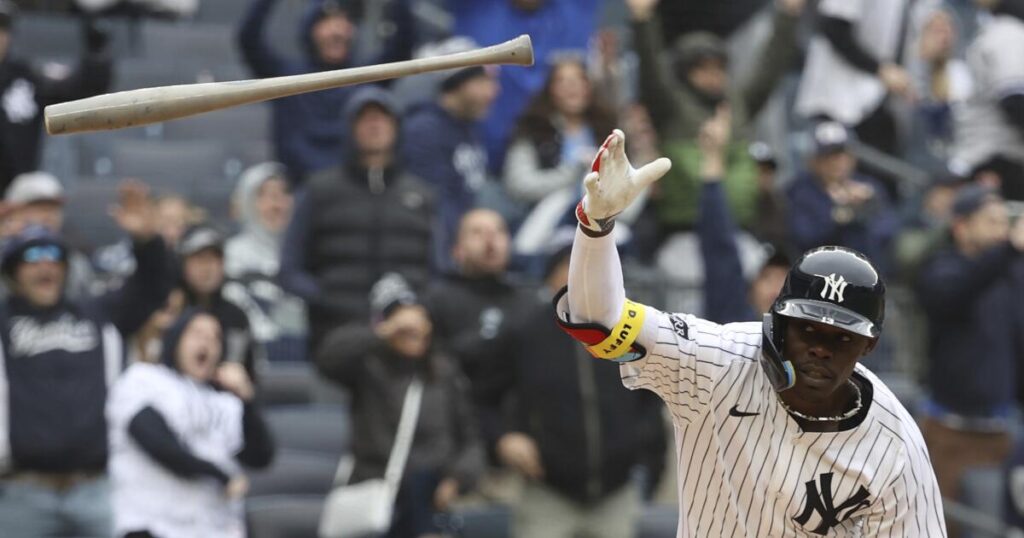
The Los Angeles Dodgers might feel relieved they narrowly escaped the New York Yankees’ explosive new weapon—a bat that resembles a torpedo. Last weekend, the Yankees unleashed a barrage of home runs, hitting 13 in total, thanks to a revolutionary bat design conceived by Aaron Leanhardt, a former MIT physicist turned baseball analytics expert.
Leanhardt joined the Yankees in 2018, bringing his expertise in physics and electrical engineering to the team. His novel bat design shifts the heaviest part of the bat from the end to the area where most contact is made, resembling a torpedo. The Yankees’ recent performance against the Milwaukee Brewers, where they hit nine home runs in a single game, has sent shockwaves through Major League Baseball.
The Science Behind the ‘Torpedo’ Bat
In an interview with The Athletic, Leanhardt downplayed the complexity of his design, emphasizing the simplicity of making the bat heavier and fatter where it contacts the ball. “Really, it’s just about making the bat as heavy and as fat as possible in the area where you’re trying to do damage on the baseball,” he explained.
Despite its simplicity, the design has proven effective. The Yankees’ hitters, including stars like Cody Bellinger and Anthony Volpe, have embraced the torpedo bat, contributing to the team’s record-tying home run spree at the start of the season.
Impact on Major League Baseball
The Yankees’ success with the torpedo bat has caught the attention of teams across the league. Brewers reliever Trevor Megill remarked on the bat’s unusual appearance, comparing it to bowling pins from the bullpen. “It took a minute for the shock to go away,” Megill told the New York Post. “But that’s the game. It’s a big data race, with science and technology playing a huge role in baseball now.”
As the Yankees’ bat design gains notoriety, other teams are likely to explore similar innovations. Padres slugger Manny Machado humorously suggested during an ESPN interview that his team could benefit from acquiring a few of these bats for their own use.
Regulatory Considerations and Future Prospects
Before departing the Yankees for a position with the Miami Marlins, Leanhardt ensured that his bat design complied with Major League Baseball regulations. The rules stipulate that bats must not exceed 2.61 inches in diameter and 42 inches in length, among other specifications. The torpedo bat meets these criteria, leaving room for its potential widespread adoption.
While the torpedo bat has garnered attention, not all Yankees players have made the switch. Aaron Judge, one of baseball’s premier power hitters, continues to use his traditional bat, citing his past success as a reason to stick with what works. “What I did the past couple of seasons speaks for itself,” Judge said. “Why try to change something if you have something that’s working?”
Looking Ahead
As the Yankees continue to experiment with the torpedo bat, the rest of the league watches closely. The potential for a shift in bat design could lead to a new era in baseball, where innovation and technology play increasingly significant roles. With the Yankees setting the pace, other teams may soon follow suit, exploring new ways to gain a competitive edge.
The Yankees’ explosive start to the season has set the stage for an exciting year in Major League Baseball. Whether the torpedo bat will become a staple in the sport remains to be seen, but its impact is undeniable, sparking curiosity and innovation across the league.







